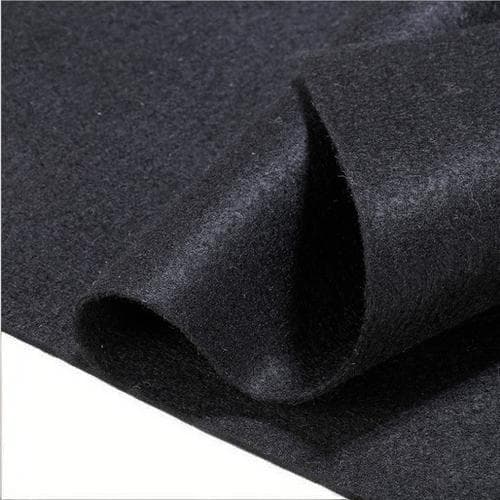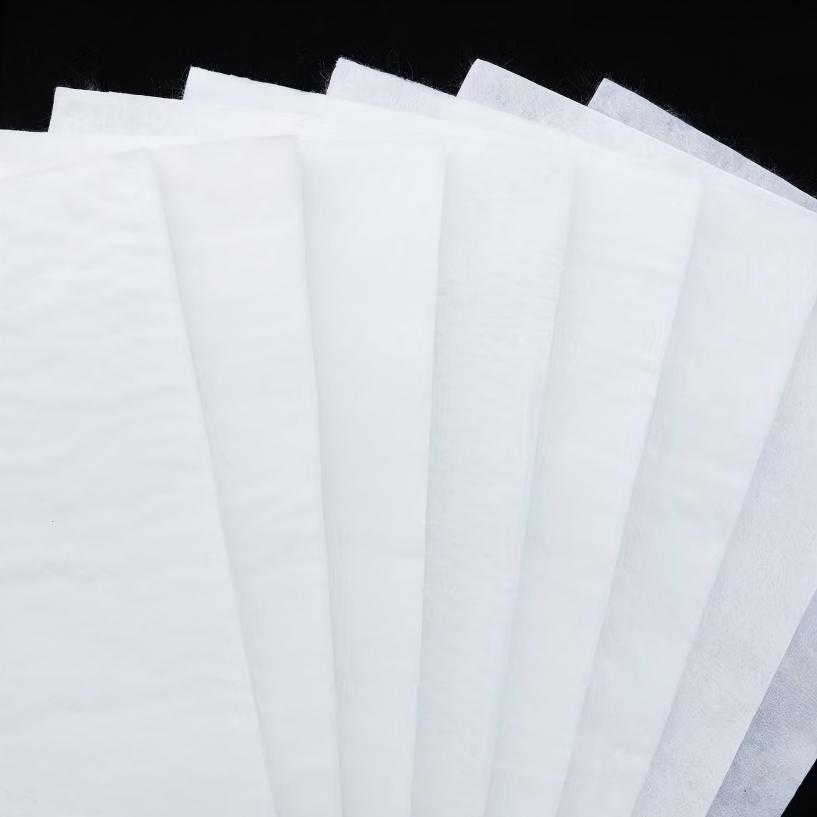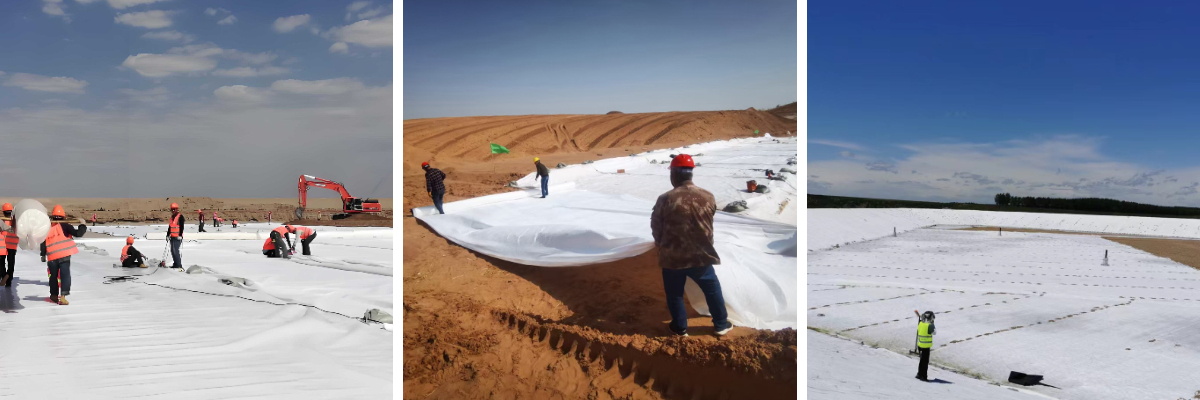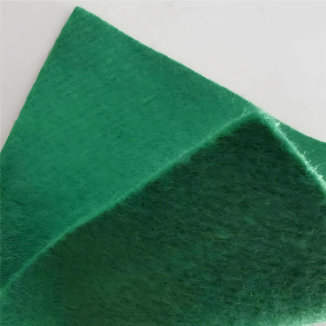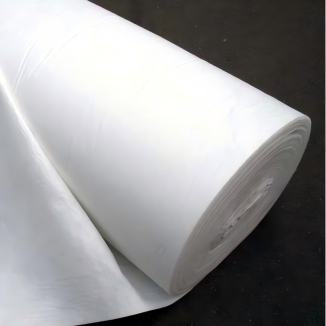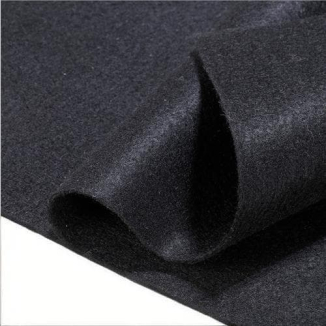Woven Fabric Geotextile
1.Good filtering performance:It can effectively intercept soil particles, allow water or gas to pass through, prevent soil erosion, and protect foundations and drainage systems in water conservancy, highway and other engineering projects.
2.Strong drainage capacity:There are many pores inside, which can quickly drain accumulated water, reduce the water level and pressure in the soil, and avoid damage to the project due to accumulated water.
3.Significant reinforcement effect:It can enhance the tensile strength and stability of soil, reduce soil deformation, and is commonly used in roadbed, dam and other engineering projects to improve the structural bearing capacity.
4.Outstanding protective effect:It can isolate different soil layers to avoid mixing with each other, while buffering external impacts and protecting soil or other structures from damage.
Product Introduction
Basic attributes
Woven Fabric Geotextile are made from synthetic fibers such as polyester and polypropylene through processes such as needle punching, weaving, or spunbonding, it is a geosynthetic material with good permeability, lightweight texture, and good flexibility.
Core functions
The core functions focus on engineering protection and improvement: it can intercept soil particles during filtration, allow water infiltration, and prevent soil loss; Drainage can quickly remove accumulated water from the soil and reduce internal pressure; Reinforcement can enhance the tensile performance of soil and reduce deformation; Protection can isolate soil layers of different properties, avoid mixing, and buffer external impacts.
Main features
It has comprehensive functions and strong practicality, and can adapt to the complex needs of various engineering scenarios such as water conservancy, highways, railways, etc. It has a wide range of applications. With its comprehensive performance, it provides strong support for the structural safety and stable operation of various projects.
Product Parameters
project | metric | ||||||||||
Nominal strength/(kN/m) | |||||||||||
6 | 9 | 12 | 18 | 24 | 30 | 36 | 48 | 54 | |||
1 | Longitudinal and transverse tensile strength / (kN/m) ≥ | 6 | 9 | 12 | 18 | 24 | 30 | 36 | 48 | 54 | |
2 | Maximum elongation at maximum load in longitudinal and transverse directions/% | 30~80 | |||||||||
3 | CBR top penetration strength /kN ≥ | 0.9 | 1.6 | 1.9 | 2.9 | 3.9 | 5.3 | 6.4 | 7.9 | 8.5 | |
4 | Longitudinal and transverse tearing strength /kN | 0.15 | 0.22 | 0.29 | 0.43 | 0.57 | 0.71 | 0.83 | 1.1 | 1.25 | |
5 | Equivalent aperture O.90(O95)/mm | 0.05~0.30 | |||||||||
6 | Vertical permeability coefficient/(cm/s) | K× (10-¹~10-), where K=1.0~9.9 | |||||||||
7 | Width deviation rate /% ≥ | -0.5 | |||||||||
8 | Unit area mass deviation rate /% ≥ | -5 | |||||||||
9 | Thickness deviation rate /% ≥ | -10 | |||||||||
10 | Thickness coefficient of variation (CV)/% ≤ | 10 | |||||||||
11 | Dynamic perforation | Puncture hole diameter/mm ≤ | 37 | 33 | 27 | 20 | 17 | 14 | 11 | 9 | 7 |
12 | Longitudinal and transverse fracture strength (grab method)/kN ≥ | 0.3 | 0.5 | 0.7 | 1.1 | 1.4 | 1.9 | 2.4 | 3 | 3.5 | |
13 | Ultraviolet resistance (Xenon arc lamp method) | Longitudinal and transverse strength retention rate% ≥ | 70 | ||||||||
14 | Ultraviolet resistance (fluorescence UV lamp method) | Longitudinal and transverse strength retention rate% ≥ | 80 | ||||||||
Product Application
Water conservancy engineering
In dam and channel construction, it can be used to filter soil particles in water flow to prevent the dam from being washed away; At the same time, it helps to drain the accumulated water around the dam or channel, reduce the impact of water pressure on the engineering structure, and enhance the stability of water conservancy facilities.
Highway and railway engineering
Laying in the roadbed can isolate different layers of soil and avoid mixing of roadbed materials; It can also enhance the bearing capacity of the roadbed, reduce road surface settlement, and discharge moisture from the roadbed, extending the service life of highways and railways.
Municipal Engineering
In projects such as sewage treatment plants and landfills, it can serve as a filtering layer to prevent impurities from clogging the drainage system; It can also serve as a protective measure, isolating landfill materials from surrounding soil and reducing pollution risks.
Agricultural Engineering
When used for irrigation channels in farmland, it can filter sediment in water, protect the channel from sedimentation, and discharge excess water, maintain suitable soil moisture, and promote crop growth.
Summary paragraph: Geotextiles play an important role in various engineering fields such as water conservancy, highways and railways, municipal engineering, agriculture, etc. due to their multiple functions of filtration, drainage, reinforcement, and protection. It can not only improve the stability and durability of engineering structures, but also reduce maintenance costs, making it an indispensable key material in various types of engineering construction.



